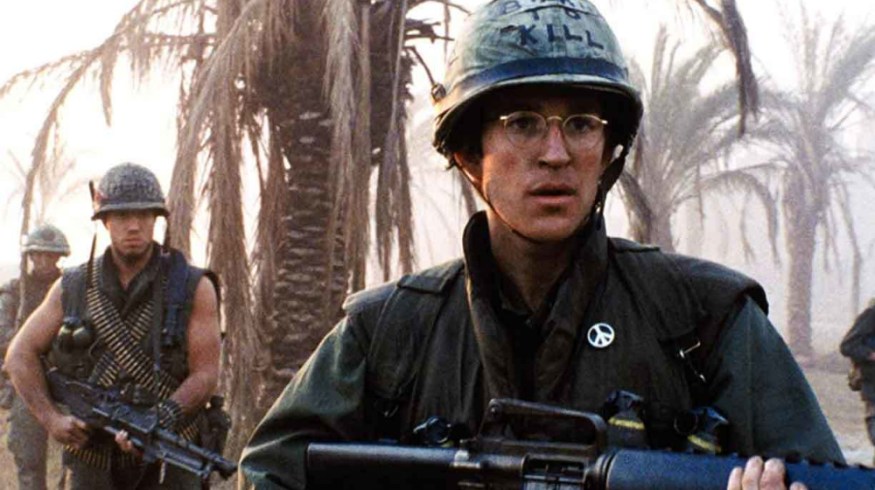
How Kubrick Used Mostly Natural Light on Full Metal Jacket
Through the clever use of Nikon stills lenses and carefully chosen film stock, Stanley Kubrick created one of the most naturalistic war movies of all time.
In today’s edition of “Holy Crap, That’s So Interesting,” we’re going to look at how a classic film (with a big budget) used minimal lighting and a DIY approach to tell its story.
I’ve heard people argue that Full Metal Jacket is one of Stanley Kubrick‘s more underrated films. People on both sides would probably agree that the film’s unassuming look and feel can make it almost not even register as a Kubrick project. Nonetheless, modern filmmaking owes a lot to how he and cinematographer Douglas Milsome decided to shoot it. (Milsome had previously served as John Alcott’s first assistant, usually pulling focus on Kubrick’s previous films.)
Kubrick worked on Full Metal Jacket for almost a year before shooting it to ensure everyone on the crew had an acute understanding of what he was trying to do and of the story he was trying to tell. So, what was he trying to do?
He wanted to shoot Full Metal Jacket like a documentary. Full stop. Not quite cinéma vérité, but not quite the steady precision associated with something like A Clockwork Orange or The Shining.
Let’s look at how it all played out with this extensive breakdown from the YouTube channel CinemaTyler.
The Look of the Film
While choosing the film stock, size of film, lenses, and camera bodies are always a possibility when entering into a film’s pre-production, Kubrick was about as specific and intentional as they get.
With Full Metal Jacket, he originally wanted to shoot 65mm stock in order to capture a grand image that rivaled The Longest Day. Once he decided that wasn’t right, he went the other direction and opted for 16mm in hopes of achieving the previously mentioned documentary feel. Finally, after testing seven cameras and 70-80 lenses, he decided to go with 35mm.
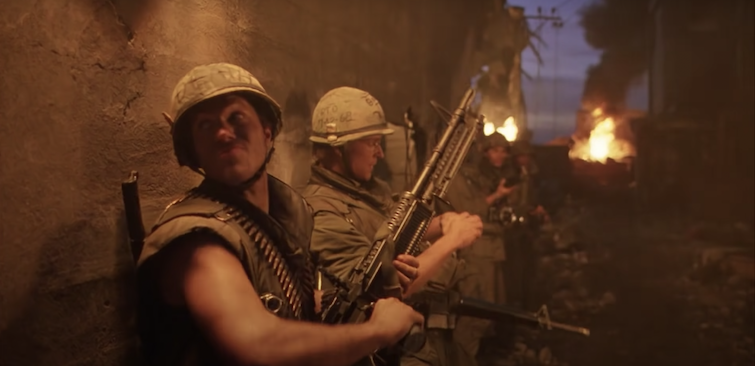
In order to ensure not-so-grand looking footage, Kubrick and Milsome chose to desaturate the image (seemingly) through the process of bleach-bypassing. (If you want a modern example of bleach-bypassing, look to Roger Deakins and The Assassination of Jesse James.)
Using Natural Light
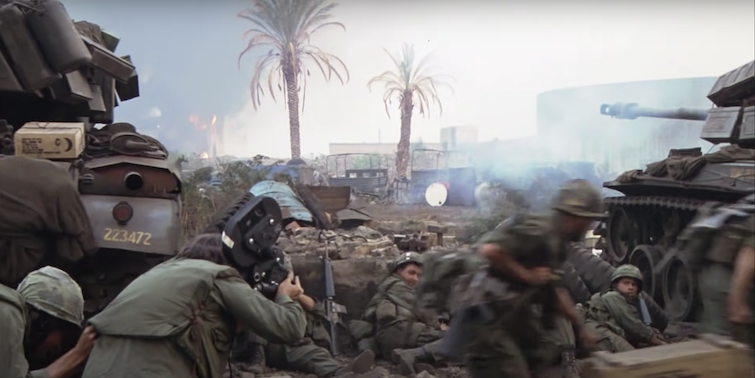
Kubrick chose to shoot with a relatively fast film stock—Kodak 5294 with an ASA of 800. So, right away this improves production’s ability to shoot without lights. Not completely, obviously, but this did indeed help in lower-light scenarios, like during the later hours of the day, the early hours of the morning, or when relying on natural light indoors. This film choice also gave them more grain at night when relying on minimal lighting, adding to that documentary/16mm-ish look they were going for.
Of course, when shooting indoors with natural light, you also have to rely on practicals. Milsome would try to expose and light the shots like one might a still image. They’d also expose for 400 speed film. Doing this while shooting with 800 speed film essentially lifted the blacks and reduced the contrast of the final image.
For daytime shots, they still wanted to shoot wide open—with a wide aperture that lets in more light and provides a shallow depth of field. Unfortunately, doing this with 800 speed film would normally blow out the image. As such, they chose to shoot either early in the morning or late in the day when overcast. If they had to shoot in the middle of the day with a bright sun, Milsome would stack ND filters in front of the lens accordingly.
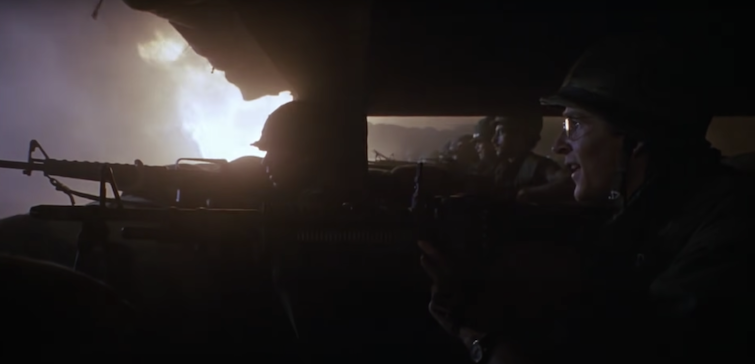
Exterior nighttime scenes were lit using 1200 amp “windy lights” on cherry pickers that could illuminate enormous areas for wide shots of the soldiers’ environments or during firefights. Then, they’d just bounce that light onto the actors for close-ups, staying true to the minimal lighting approach.
Regarding that minimal approach, Milsome, inspired by his previous work with Alcott, said the idea was to be able to fit your lighting into a single suitcase. It’s clear that mentality carried over into Full Metal Jacket for Milsome and Kubrick alike.
Lenses and Framing
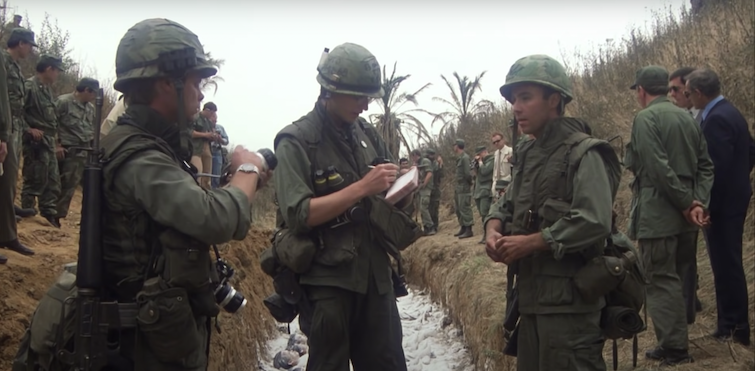
Kubrick originally wanted to only use Nikon stills camera lenses due to how fast they are—1.4, 0.95, etc. So, he did what any filmmaker would do. He bought every Nikon lens available.
He then had a viewfinder made that would employ those same Nikon lenses. This allowed him to see exactly what the camera would do while framing certain compositions. For those compositions, he took inspiration from actual wartime photographers.
Kubrick would find the frame, and yell out for the grip to mark it. Once the dolly was brought over, if it was placed even an inch off from his intended spot, he’d tell them to unload everything and find the correct setup.
It’s hard for me to know how to feel when hearing things like this. I’d say there are obviously modern equivalents like Fincher or Paul Thomas Anderson, but is this what it takes to make something truly meaningful that stands the test of time? I suppose I have to go with “maybe.”
I like Kubrick and all the other big-time directors, no doubt. But I can’t say with 100% certainty whether or not I’d like to be on set with someone like that. Regardless, the production of Full Metal Jacket sounds just as interesting as the film itself. I’ll definitely be rewatching it in weeks ahead (and taking note of all the framing and lighting choices).
Highly Recommended Channel
You know those pretentious YouTube film essays that never really come together in a cohesive way? The ones that mistake rambling, surface-level observations for thoughtful analysis? The CinemaTyler channel is the opposite of that. Instead, you get factual breakdowns of how events and actions played out during the productions of these classic films.
The channel features several videos on Kubrick’s movies, each offering an extensive deep-dive into the production and the stories surrounding it. My personal CinemaTyler favorites are the Apocalypse Now series (as seen above) and this specific video about how Robert Elswit shot There Will Be Blood. Enjoy.
For more director profiles and general filmmaking advice, check out these articles:
- How Bo Burnham Shot His Netflix Special “Inside” with a Lumix S1H
- Lights, Camera, Action: How Filmmakers Frame Heroes and Villains
- Learn from the Masters: The Best Documentaries About Filmmaking
- The Cameras and Lenses Behind the Marvel Cinematic Universe—Phase Four
- To Break or Not to Break: The Significance of the 180-Degree Rule
Cover image via Warner Bros.




